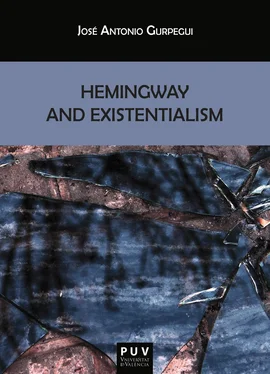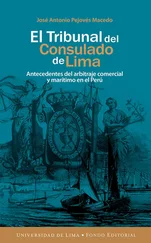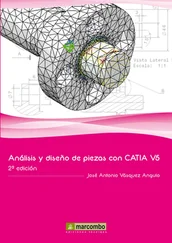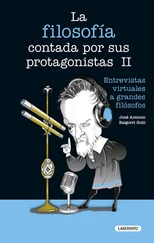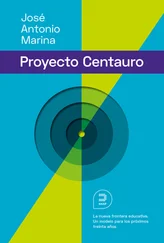4 One hundred copies in Dutch paper, signed by Joyce, each 350 francs; the prices of the 150 copies in “vergé d’arches” were 250 francs, and 750 copies in simple binding were 150 francs.
5 Since we can find different ways of spelling Turgenieff (Turgueniev, Turgenief, Turgueniev, Turgeniev, Turguenev, Turgenev), I will adopt the one used by Hemingway.
6 www.authorsden.com/visit/viewarticle.asp?AuthorID=9114.
7 There is a statue of Rima in Hyde Park, London, by Jacob Epstein.
8 http://www.eldritchpress.org/ist/smoke.htm
9 In “Apéndice: Unas palabras sobre Humo ” (285-300), the Spanish edition of Smoke . “Among all those accusations against Turguéniev made by his detractors, two of them are prominent due to their reoccurrence and ferocity: the vagueness and lack of commitment of the author and his deep contempt for Russia and all Russian things.”
10 I would like to explicitly call attention to how the light is mentioned at the beginning and end of the quote -it is a complete paragraph-, since, as I will later explain, the light in Hemingway acquires an important symbolic meaning as it is directly related with knowledge, with “to know what it is all about.” Nevertheless, I am advancing an explanatory quote: “There is no reason why because it is dark you should look at things differently from when it is light. The hell there isn’t” ( Sun , 148).
11 In his article, Brogan analyzes the parallelism between Kierkegaard’s Repetition and Hemingway’s posthumous The Garden of Eden .
12 Miguel de Unamuno in The Tragic Sense of Life ( http://www.gutenberg.org/ebooks/14636), deserves a study on its own since his theories concerning transcendence (“Do not let us talk of merit or of right or of the wherefore of our longing, which is an end in itself, or we shall lose our reason in a vortex of absurdities”), change (“A man can change greatly, almost completely even, but the change must take place within his continuity”), and knowledge (“All knowledge has an ultimate object”) follow different lines of thought to those exposed here, although coherent within its philosophical vision. However, his idea of the relationship between the individual and the universal is useful for our line of argument. Other lines of argument which are not studied in the present research are also accurate, like “The will and the intelligence seek opposite ends,” but others become questionable—in Hemingway—that “The will and the intelligence have need of one another.” Ortega y Gasset’s theories are also not included in this research since we think, as Eduardo Nicol does, that “La confusión grave en que Ortega incurre consiste en identificar el ser con el concepto del mismo que empezó a elaborar la metafísica griega: el concepto de esa “figura estable y fija,” es decir, el concepto de forma y substancia.” (“The serious confusion Ortega commits consists on identifying the being with its own concept, which came about in Greek metaphysics: that of “stable and fixed figure,” in other words, the concept of form and substance.”) On the other hand, the present research assumes Kierkegaard and Heidegger’s approach of man as “projection.”
13 Jean-Paul Sartre was one of the regulars that visited Hemingway at his room at the Ritz Hotel after the liberation of Paris during World War II.
14 http://clcoc.org/inetserm/morals.htm. Paraphrasing, Death in the Afternoon , 4.
15 One of his works, included in Mi punto de vista , has the title of “My position as a religious writer.”
16 Even Kierkegaard himself seems to suggest such theory in his Diario when he cites the “Genesis” (35, 29) as Pietro Prini states (40). Furthermore, The Sickness Unto Death takes Christianism as a reference.
17 Kierkegaard writes in The Sickness Unto Death “Socrates, Socrates, Socrates! Yes, one may well call thy name thrice, it would not be too much to call it ten times, if that would do any good” (223).
18 “The Christian heroism … is to venture wholly to be oneself, as an individual man, this definite individual man, alone before the face of God, alone in the tremendous exertion and this tremendous responsibility.” In footnote 29 continues: “the self despairingly wills to dispose of itself or to create itself, to make itself the self it wills to be, distinguishing in the concrete self what it will and what it will not accept” (201). The quotes in footnotes 28 and 29 are from The Sickness Unto Death III, ii, b.
19 See E. L. Allen, Existentialism from Within (N. Y.: Macmillan, 1953) and James D. Collins, The Existentialists: A Critical Study (Chicago: Regnery, 1952) (cited in Killinger, 55).
20 “The most important issue of our time depends on this clarification; if nihilism is a conclusion or a method bitterly clear to find again in the authentic sense of the being. In this second alternative, misunderstandings arise from not recognizing the enigma of the ambiguity of the being as a necessity, objective or freedom.”
21 Existentialism was born by the passionate protest against man’s ruin, against its deindividualization and depersonalization, against the foolish ignorance of its individual peculiarity, of its freedom and its personal responsibility, and against the contempt—even more foolish—of perplexity and caducity, of fragility and man’s finitude.
Конец ознакомительного фрагмента.
Текст предоставлен ООО «ЛитРес».
Прочитайте эту книгу целиком, купив полную легальную версию на ЛитРес.
Безопасно оплатить книгу можно банковской картой Visa, MasterCard, Maestro, со счета мобильного телефона, с платежного терминала, в салоне МТС или Связной, через PayPal, WebMoney, Яндекс.Деньги, QIWI Кошелек, бонусными картами или другим удобным Вам способом.
